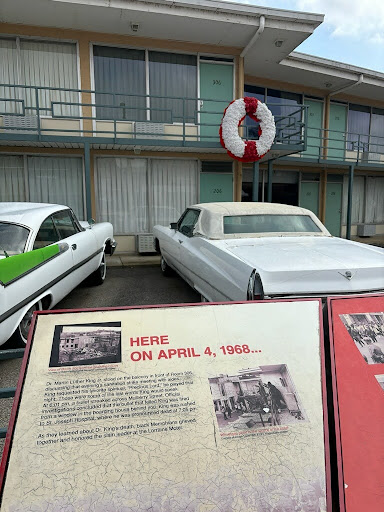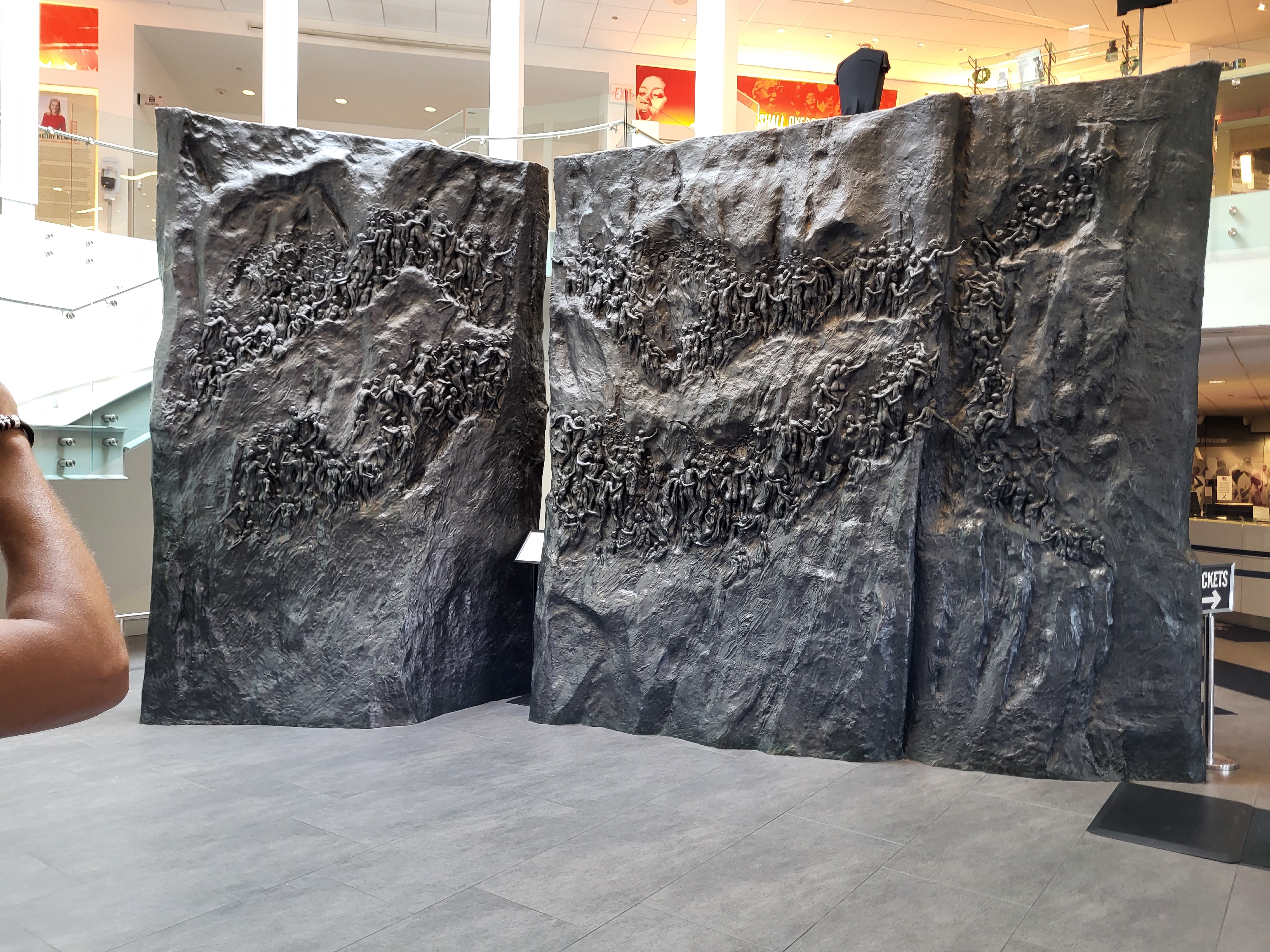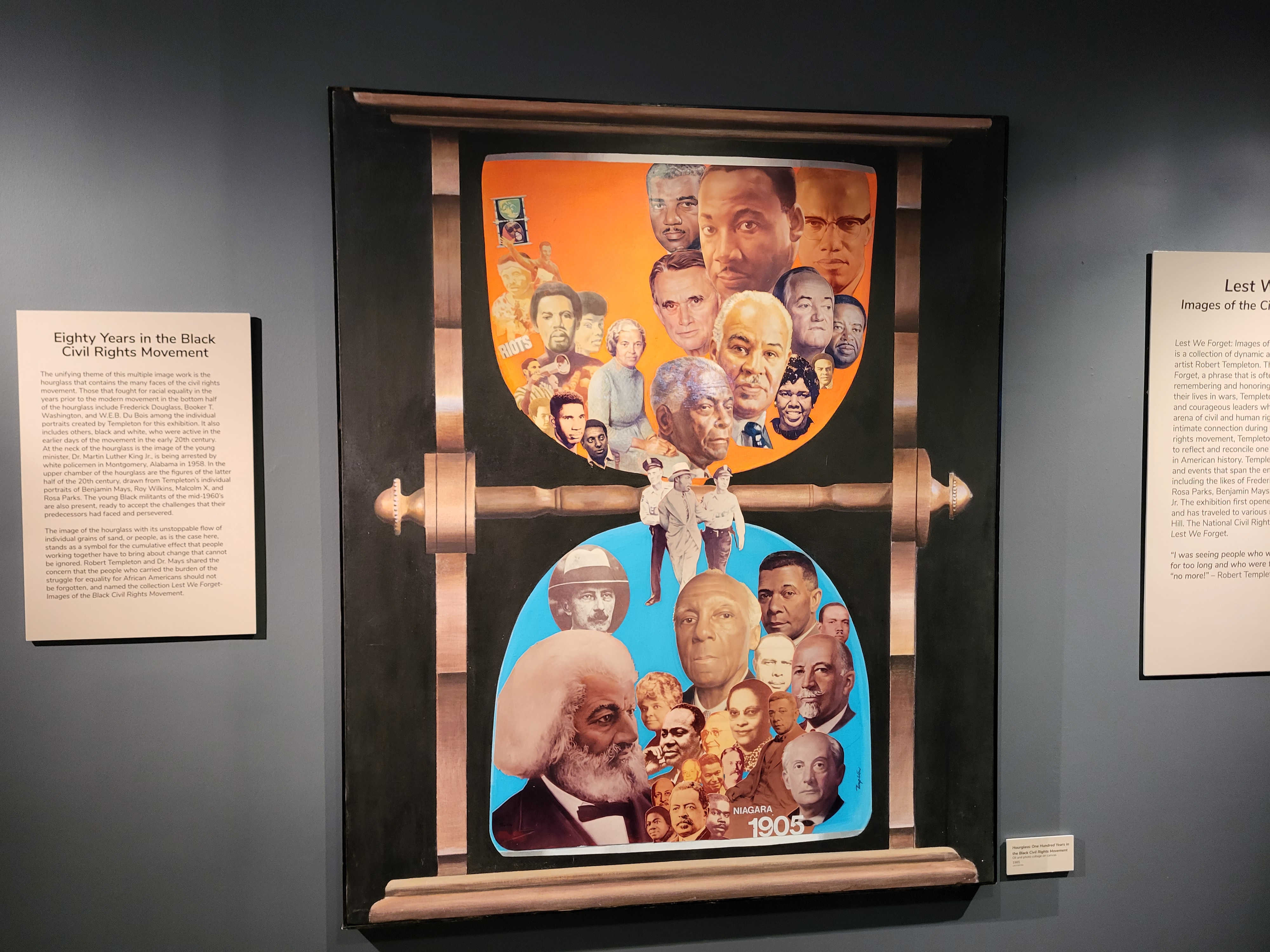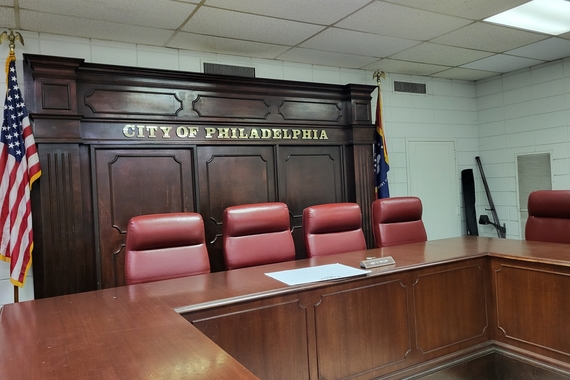MLK Immersion Day 1: Memphis, Tennessee
Video of Memphis activities by Calli Hadler
MEMPHIS, Tenn. - After an initial day of travel, students in the University of Minnesota’s MLK 3000 course had a busy Sunday.
Destinations on the class’s second day included the National Civil Rights Museum, Clayborn Temple, I AM A MAN Plaza and Mason Temple.
The last three hold great significance due to Martin Luther King Jr.’s role at these locations mere weeks before his death. King was in Memphis to support the Memphis sanitation strike, in which Black sanitation workers organized against the city of Memphis due to poor treatment and discrimination.
King contributed by marching with the striking workers on March 28, 1968, from Clayborn Temple. Later in the strike, on April 3, 1968, King gave a speech at Mason Temple, his final speech before his assassination a day later.
Before visiting these three, the class spent two hours at the National Civil Rights Museum learning more about the significance of these places. The museum is built around the former Lorraine Motel, where James Earl Ray, a white ex-convict, killed King.
The motel retains the same appearance as when King died, accompanied by cars from the late 1960s and a wreath of flowers adorning the room in which King stayed.

A 13-foot tall bronze sculpture greets incoming visitors. The sculpture, “Movement to Overcome”, has been at the entrance of the museum since 1991, and is representative of the struggles of the Civil Rights Movement. All throughout the piece, figures scale the sides, supporting one another along the struggle.

The first exhibit, a non-permanent art gallery titled “Lest we Forget… Images of the Black Civil Rights Movement”, is a collection of sketches and oil paintings of Civil Rights leaders and events from the late 1960s created by Robert Templeton, an artist known for his work illustrating the Civil Rights Movement, as well as a painting of former President Jimmy Carter in the Smithsonian Institute’s National Portrait Gallery.

The rest of the museum could be broadly classified into three sections.
The first section covers important topics in history leading up to the Civil Rights Movement, such as history of the Transatlantic slave trade, lives of slaves and legislation targeting Black people before the Black Civil Rights Movement.
The second section goes into specific events and struggles during the Civil Rights Movement. Brown vs. the Board of Education, the Montgomery Bus Boycott, Freedom Riders, the March on Washington, Bloody Sunday in Selma and more. All of these topics are grouped with artifacts and stories from those involved.
The third section handles a lighter, but still important topic: Black culture. Learning more about how Black people expressed themselves through art, music and other media gives even more life to the movement itself.
Seeing all of these sections in succession only furthers the connection they have with one another in the battle for rights. The culmination of the museum is the hard-hitting final exhibit when visitors enter room 306, King’s motel room shortly before his assassination right outside of the same room.
Genisse Wilson, administrative specialist with the MLK Program, said at the time of King’s assassination, she was in Chicago with her mother, a minister.
Wilson and her family were called back to Minneapolis, avoiding the riots in Chicago following the news of King’s assassination that resulted in 11 deaths and 500 injuries.
“This particular day changed the course of my family’s life,” Wilson said
A five-and-a-half hour bus ride to Selma, Ala., gave members of the class time to reflect on the museum and their feelings before sharing them with one another in a discussion in their motel lobby.
Evan Johnson, senior academic adviser with the MLK program conducted the group reflection, and asked students to list adjectives that describe their feelings during and after the museum.

Zacharius Khan, a student on the trip, believed the information taught in school is only a fraction of what is required to understand the struggles of the movement.
“It’s not enough to quantify what this means,” said Khan.
Another student in the course, Dylan Rogers, wondered what King may have done if not for his assassination at the age of 39.
“I wish we could see what he would’ve done with the rest of his life,” said Rogers.
As the discussion ended at midnight Monday, the class rested in preparation for a Tuesday that includes guest speakers Mama Bettie Mae Fikes, regarded as the voice of Selma, talking with the class about the history of music within the Black Freedom Movement, as well as JoAnne Bland, an activist who is one of the youngest people to be jailed during the Civil Rights Movement at age 11 and was involved in events such as Bloody Sunday and the voting rights march.
By Alec Zadra



